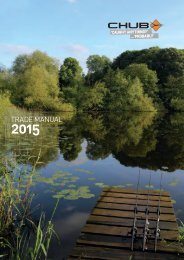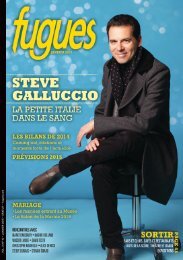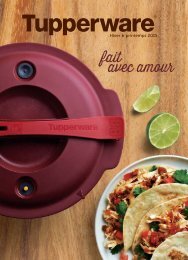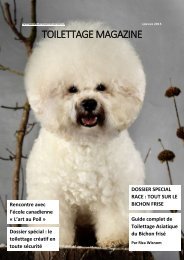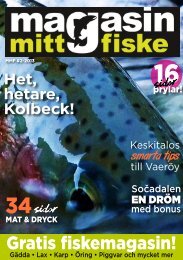CHAMPAGNE
This combination of weather influences makes for constant, moderate precipitation – a near-ideal pattern of rainfall that provides the vines with just enough water to produce quality fruit. Mean annual rainfall for the Champagne region as a whole is close to 700mm, ranging from 600mm to 900mm depending on the area.
This combination of weather influences makes for constant, moderate
precipitation – a near-ideal pattern of rainfall that provides the vines with just
enough water to produce quality fruit. Mean annual rainfall for the Champagne
region as a whole is close to 700mm, ranging from 600mm to 900mm depending
on the area.
You also want an ePaper? Increase the reach of your titles
YUMPU automatically turns print PDFs into web optimized ePapers that Google loves.
26<br />
Malolactic<br />
fermentation (MLF)<br />
Clarification<br />
Malolactic<br />
fermentation (MLF)<br />
Clarification<br />
Malolactic fermentation (MLF)<br />
After primary fermentation may come malolactic fermentation (MLF), in which<br />
malic acid is broken down into lactic acid by Oenococcus oeni bacteria. MLF also<br />
generates by-products that modify the organoleptic profile of the wine, mainly by<br />
lowering its apparent acidity. Champagne winemakers are generally in favour of<br />
MLF, with the exception of a few producers who prefer to avoid it altogether. Some<br />
take a pragmatic view, considering it necessary for some wines but not for others.<br />
The MLF process is kick-started by storing the wines at a constant temperature of<br />
around 18°C, and inoculating them with selected strains of lyophilized bacteria.<br />
Acid content is continuously monitored to assess the rate of fermentation, which<br />
is usually complete within 4-6 weeks. The wines are then drawn off and clarified.<br />
Clarification<br />
Clarification includes fining, filtering<br />
(using kieselguhr clay, filter-pads,<br />
plates, membranes or cartridges)<br />
and centrifuging. This eliminates the<br />
lees and other impurities, producing<br />
clear, natural base wines (known<br />
locally as ‘vins clairs’) that are ready<br />
for blending into a ‘cuvée’ (local term<br />
for a blended Champagne). Base<br />
wines are classified by varietal,<br />
vintage, vineyard (or sometimes the<br />
individual vineyard plot) and pressing<br />
fraction (whether ‘cuvée’ or ‘taille’).




